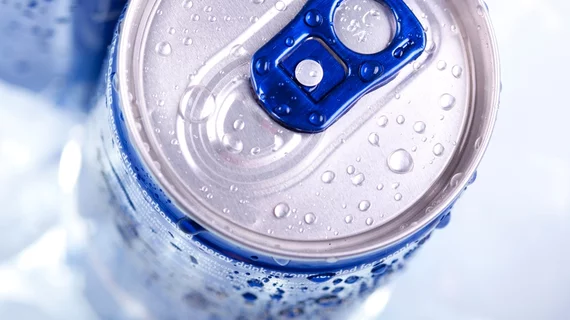Consuming 32 ounces or more of an energy drink within an hour could raise blood pressure and trigger life-threatening arrhythmias, according to research published ahead of print in the Journal of the American Heart Association.
The study, a randomized, double-masked, placebo-controlled trial of 34 healthy volunteers in their late teens and early twenties, studied the connection between energy drinks—which are consumed by an estimated 30% of American teens on a regular basis—and heart health. In past studies, the quick-fix drinks have been linked to cardiac arrest, MI, spontaneous coronary dissection and coronary vasospasm, along with increased platelet aggregation, heightened systolic blood pressure and QTc prolongation.
“Although commonly promoted as supplements that can boost performance and cognition, these drinks have also been reported to have numerous detrimental side effects, particularly cardiovascular and neurological in nature,” first author Sachin A. Shah, PharmD, and co-authors wrote in JAHA. “The number of annual emergency department visits involving energy drinks increased from 10,068 in 2007 to 20,783 in 2011.”
Shah et al.’s study participants were randomized to drink 32 ounces of one of two commercially available caffeinated energy drinks or a placebo on three separate days. Subjects were asked to drink all 32 ounces within 60 minutes, but no faster than one 16-ounce bottle per half hour.
Caffeine dosed under 400 milligrams isn’t expected to result in any kind of electrical abnormality in the heart, the authors said, and drinks in the study contained between 304 and 320 milligrams of caffeine per 32 fluid ounces. Taurine, glucuronolactone and B-vitamins were also common ingredients in the drinks, while the placebo concoction consisted of carbonated water, lime juice and cherry flavoring.
Shah and colleagues measured participants’ blood pressure and heart activity with electrocardiograms at baseline and every 30 minutes for four hours after drink consumption. They found the QT interval in individuals who consumed either energy drink was 6 to 7.7 milliseconds higher at four hours compared to placebo drinkers, suggesting QT interval changes associated with energy drinks can be sustained for hours rather than subsiding after a short period.
The team also discovered a statistically significant 4 to 5 mmHg increase in systolic and diastolic blood pressure in patients who consumed the energy drinks.
“While blood pressure changes can be attributed primarily to the caffeine, other ingredients in energy drinks may pose some hemodynamic activity,” Shah and co-authors wrote. “Taurine has been shown to lower blood pressure in prehypertensive patients, indicating the need for investigating simultaneous caffeine and taurine intake.”
The authors said their study is limited in its small sample size and the fact that they investigated energy drinks on their own. In a lot of cases, they wrote, energy drinks are consumed hand-in-hand with other substances like alcohol, which could produce different results.
“Further investigation is warranted on whether an individual ingredient or a unique combination leads to the observed electrophysiological and hemodynamic changes,” Shah et al. said. “The impact of long-term energy drink consumption remains unknown.”

